Mumbai's Marvels: A Cultural Odyssey
Join us for a captivating free walking tour that unveils Mumbai's vibrant history and artistic spirit, exploring its architectural gems and cultural treasures.
Time
3 Hours
Stops
9 Places
Distance
3.4 km
Gateway of India
This iconic arch monument, built in 1924, is a symbol of Mumbai's rich history and a popular starting point for exploring the city's colonial architecture.
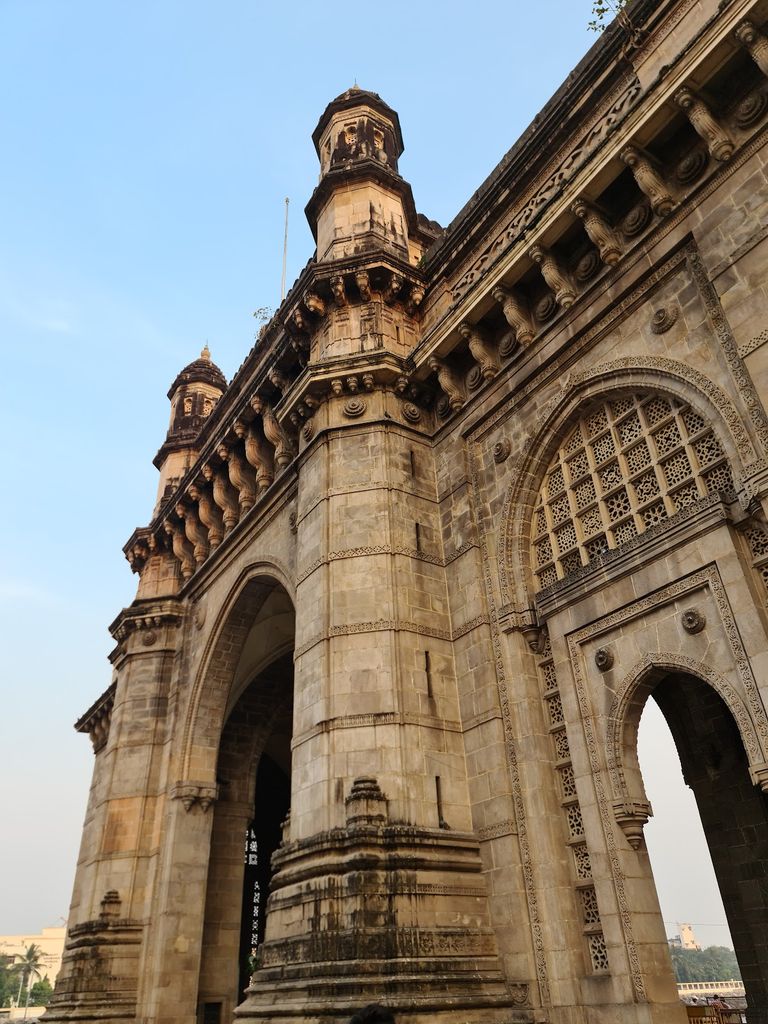
Gateway of India (Source: Google Maps)
The Gateway of India, completed in 1924, stands as a majestic arch monument symbolizing Mumbai's rich history. Designed in the Indo-Saracenic style, it was built to commemorate the visit of King George V and Queen Mary to India. The structure, made from yellow basalt, features intricate carvings and is a popular gathering spot for locals and tourists alike. It overlooks the Arabian Sea and serves as a gateway for travelers arriving by boat, making it a significant landmark in Mumbai. The Gateway is also a focal point for many cultural events and celebrations, reflecting the city's blend of colonial and Indian heritage.
Taj Mahal Palace Hotel (Exterior View)
Located adjacent to the Gateway of India, this historic luxury hotel has hosted numerous dignitaries and celebrities since its opening in 1903.
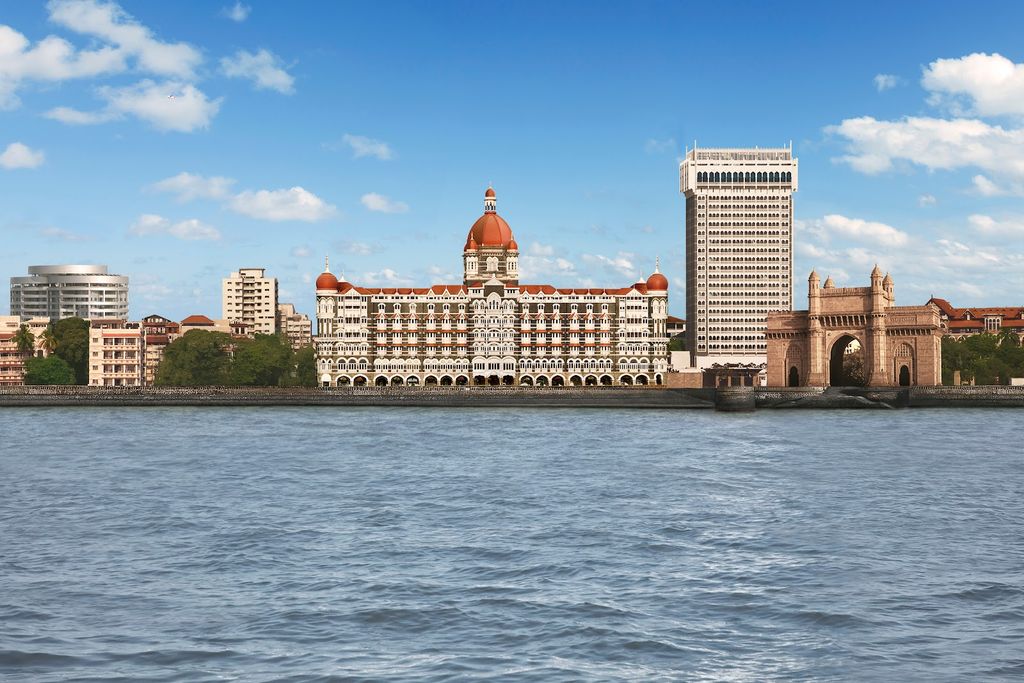
Taj Mahal Palace Hotel (Exterior View) (Source: Google Maps)
The Taj Mahal Palace Hotel, opened in 1903, is an iconic luxury hotel that has become synonymous with Mumbai's hospitality. Designed in a blend of Moorish, Indian, and Renaissance architectural styles, the hotel has hosted numerous dignitaries and celebrities, including world leaders and film stars. Its grand facade features stunning domes and ornate arches, capturing the essence of India's rich architectural heritage. The hotel has survived many historical events, including the 2008 terrorist attacks, and remains a symbol of resilience and elegance in the city. Visitors are often enchanted by its opulent interiors and the tales of its illustrious past.
Chhatrapati Shivaji Maharaj Vastu Sangrahalaya (Prince of Wales Museum)
This museum showcases a diverse collection of ancient artifacts, sculptures, and artworks, offering a glimpse into India's rich cultural heritage.
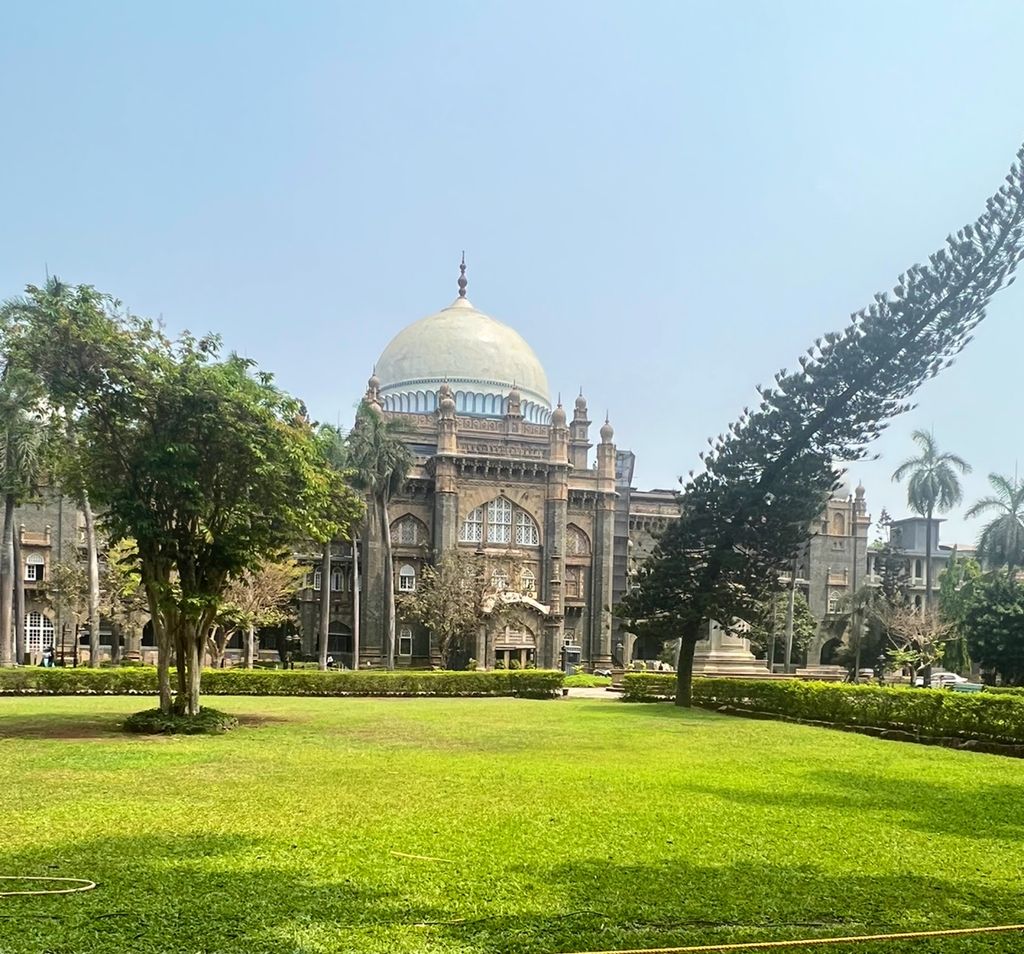
Chhatrapati Shivaji Maharaj Vastu Sangrahalaya (Prince of Wales Museum) (Source: Google Maps)
The Chhatrapati Shivaji Maharaj Vastu Sangrahalaya, formerly known as the Prince of Wales Museum, is a premier museum in Mumbai that houses an extensive collection of art, archaeology, and natural history. Established in 1922, the museum is renowned for its Indo-Saracenic architecture, featuring intricate arches and domes. Inside, visitors can explore a diverse array of artifacts, including ancient sculptures, decorative arts, and a rich collection of Indian miniatures. The museum serves as a vital institution for cultural education and preservation, offering insights into India’s historical and artistic legacy. Its engaging exhibitions make it a must-visit for anyone interested in the country’s rich heritage.
Jehangir Art Gallery
A short walk from the museum, this gallery is a hub for contemporary Indian art and frequently hosts exhibitions by emerging and established artists.
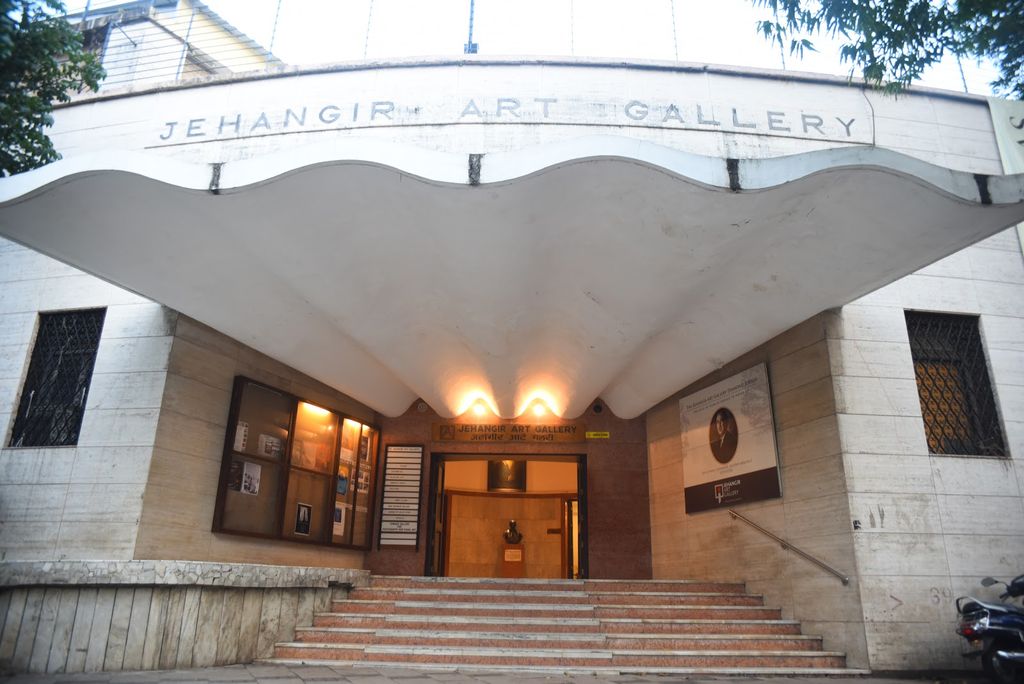
Jehangir Art Gallery (Source: Google Maps)
Jehangir Art Gallery, established in 1952, is a significant cultural institution in Mumbai dedicated to promoting contemporary Indian art. Located near the Chhatrapati Shivaji Maharaj Vastu Sangrahalaya, the gallery hosts a variety of exhibitions showcasing works from both emerging and established artists. The gallery's architecture is notable, featuring spacious halls that provide an inviting atmosphere for art lovers. It is a hub for creative expression and often serves as a platform for artists to engage with the public. The Jehangir Art Gallery not only highlights the vibrant art scene in Mumbai but also fosters dialogue around contemporary issues through its diverse exhibitions.
Kala Ghoda Art Precinct
Known for its vibrant cultural scene, this area features art galleries, boutiques, and cafes, making it a perfect spot to soak in Mumbai's artistic vibe.
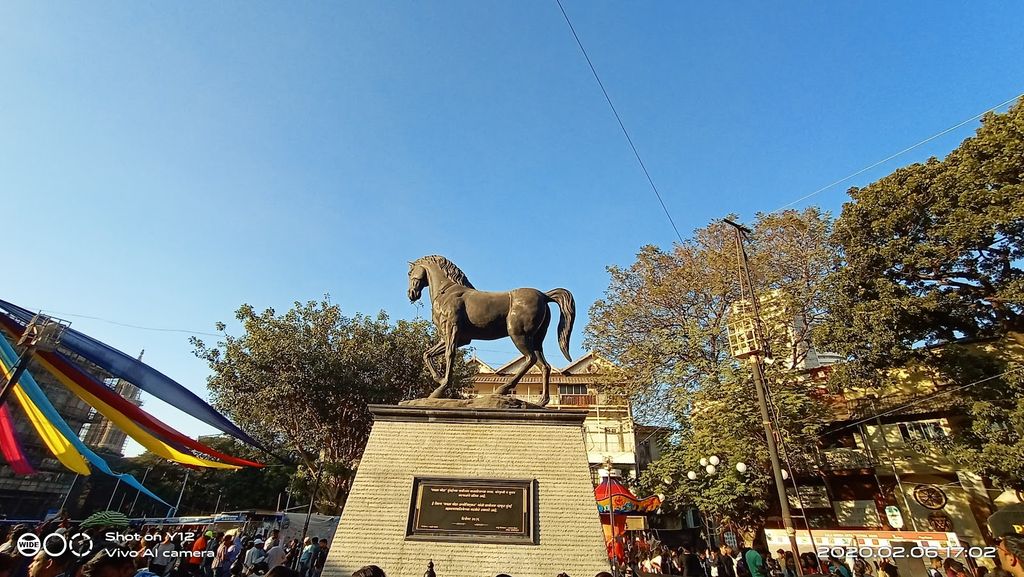
Kala Ghoda Art Precinct (Source: Google Maps)
The Kala Ghoda Art Precinct is a vibrant cultural hub in Mumbai known for its artistic atmosphere and historical significance. This area is home to numerous art galleries, boutiques, and cafes, making it a popular destination for art enthusiasts and tourists alike. The precinct derives its name from the black horse statue that once stood at its center. It hosts various cultural events and festivals, including the Kala Ghoda Arts Festival, which attracts thousands of visitors each year. The architecture of the precinct reflects a mix of Indo-Saracenic and Gothic styles, contributing to its charm. This lively enclave showcases Mumbai's creativity and serves as a testament to the city's rich artistic heritage.
Flora Fountain
This beautifully sculpted fountain, built in 1864, is a prime example of Mumbai's blend of British and Indian architectural styles.
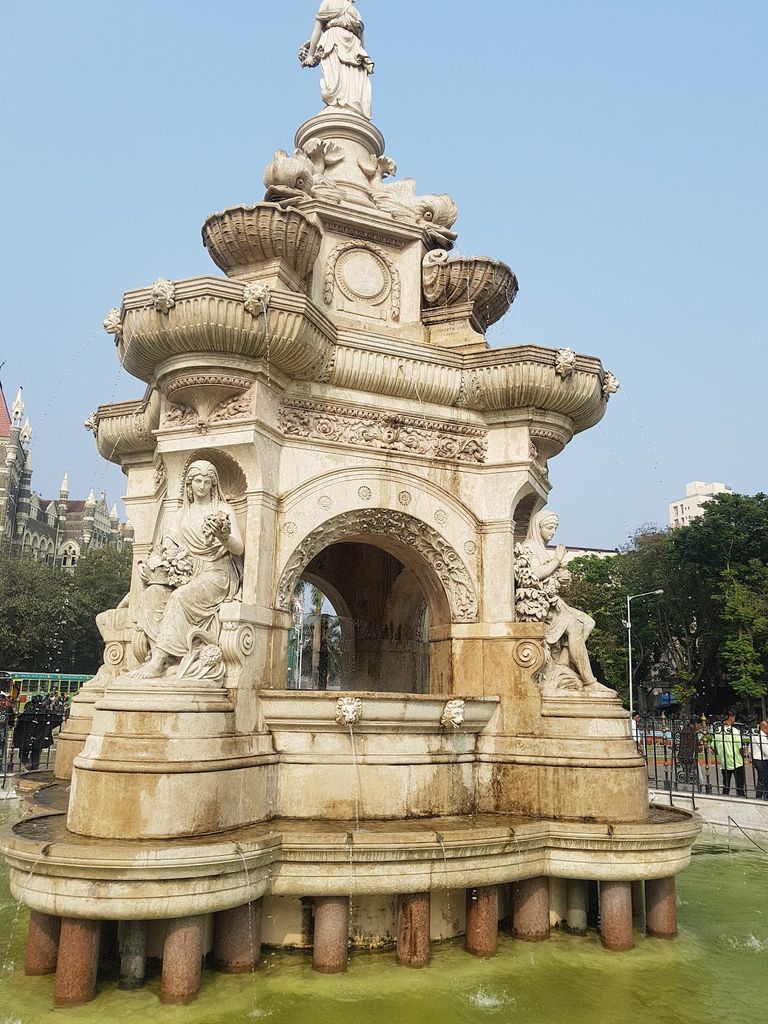
Flora Fountain (Source: Google Maps)
Flora Fountain, built in 1864, is an exquisite example of Mumbai's architectural blend of British and Indian styles. The fountain is adorned with a stunning statue of Flora, the Roman goddess of flowers, and is surrounded by intricately carved stonework. Located in the Fort area, it has become a popular meeting point and a picturesque landmark. The fountain was designed by Sir Edward Lutyens, who later played a significant role in the planning of New Delhi. Flora Fountain is not only a beautiful piece of architecture but also symbolizes the city's colonial past and its evolution over time. The fountain's serene presence amidst the bustling city makes it a favorite spot for both locals and visitors.
St. Thomas Cathedral
As the first Anglican church in Mumbai, built in 1718, this cathedral offers insight into the city's colonial past and architectural evolution.
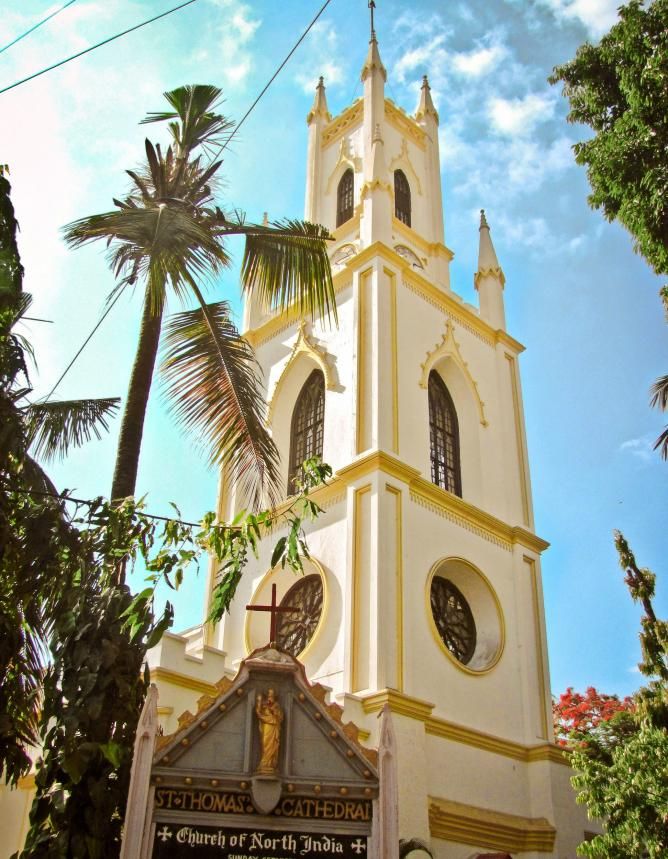
St. Thomas Cathedral (Source: Google Maps)
St. Thomas Cathedral, built in 1718, holds the distinction of being the first Anglican church in Mumbai. Its neo-Gothic architecture features pointed arches, ribbed vaults, and stained glass windows, reflecting the city's colonial heritage. The cathedral is dedicated to St. Thomas, one of the apostles of Jesus, and serves as a significant place of worship and reflection for the Anglican community. Inside, visitors can find a serene atmosphere, beautiful memorials, and intricate woodwork. The cathedral has witnessed many historical events and remains a testament to Mumbai's diverse religious fabric. Its location in the heart of the city makes it an important landmark for both spiritual and historical exploration.
Horniman Circle Garden
This lush green space in the heart of the city is perfect for a brief respite, surrounded by historic buildings and the bustling energy of Mumbai.

Horniman Circle Garden (Source: Google Maps)
Horniman Circle Garden is a lush green oasis located in the bustling Fort area of Mumbai. Established in the late 19th century, it is surrounded by historic buildings and provides a peaceful respite from the city's vibrant energy. The garden features well-maintained lawns, pathways, and a variety of trees, making it a popular spot for locals to relax and unwind. The design of the garden reflects the Victorian style, with a central fountain and benches that invite visitors to sit and enjoy the surroundings. It is named after the Englishman Horniman, who was a prominent figure in the city's history. The garden often hosts cultural events and serves as a venue for community gatherings, enriching Mumbai's social landscape.
Asiatic Society of Mumbai
Known for its grand neo-classical architecture and vast collection of rare manuscripts, this library is a treasure trove for history enthusiasts.
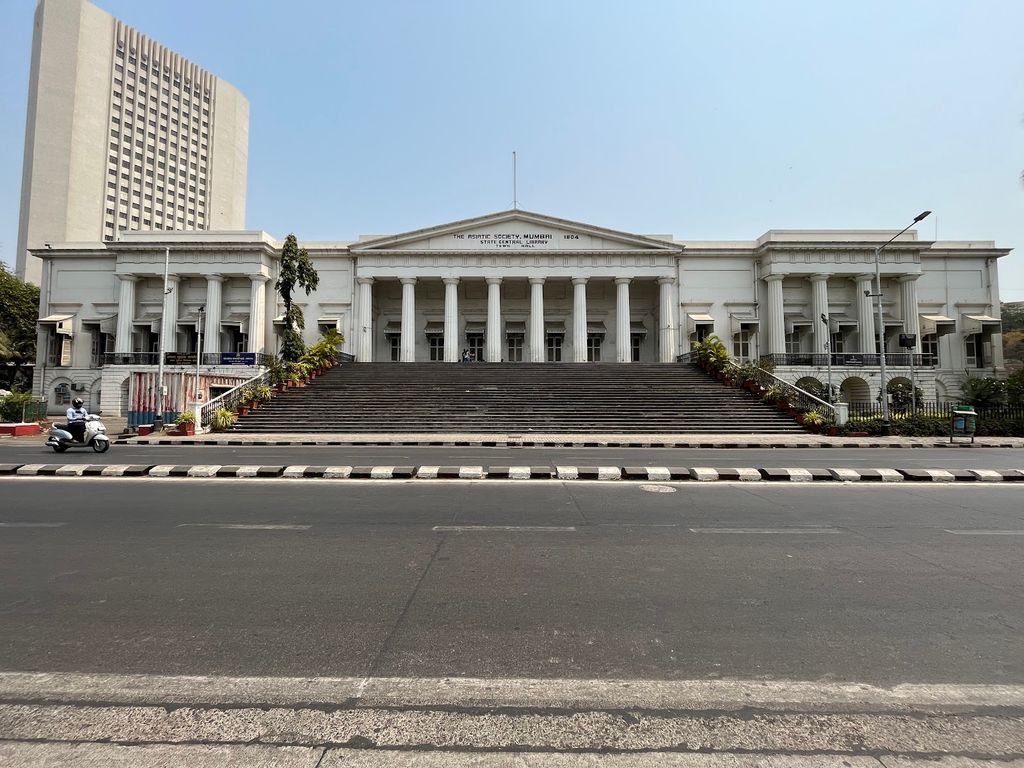
Asiatic Society of Mumbai (Source: Google Maps)
The Asiatic Society of Mumbai, founded in 1804, is a prestigious institution known for its grand neo-classical architecture and extensive library. The building features Corinthian columns and an impressive facade, making it a landmark in the city. The society houses a vast collection of rare manuscripts, books, and historical documents, making it a treasure trove for historians and researchers. It has played a vital role in the cultural and intellectual development of Mumbai, hosting lectures, exhibitions, and discussions on various subjects. The Asiatic Society is also known for its commitment to preserving India's literary heritage, and its reading rooms provide a quiet space for scholars and enthusiasts alike. The society's contribution to the academic community and its architectural beauty make it a significant part of Mumbai's cultural fabric.

Your travels, your rules.
Create your own Free Walking Tours.
Set your preferences, distances and anything you want to do or see.
Completely free, no payment required.